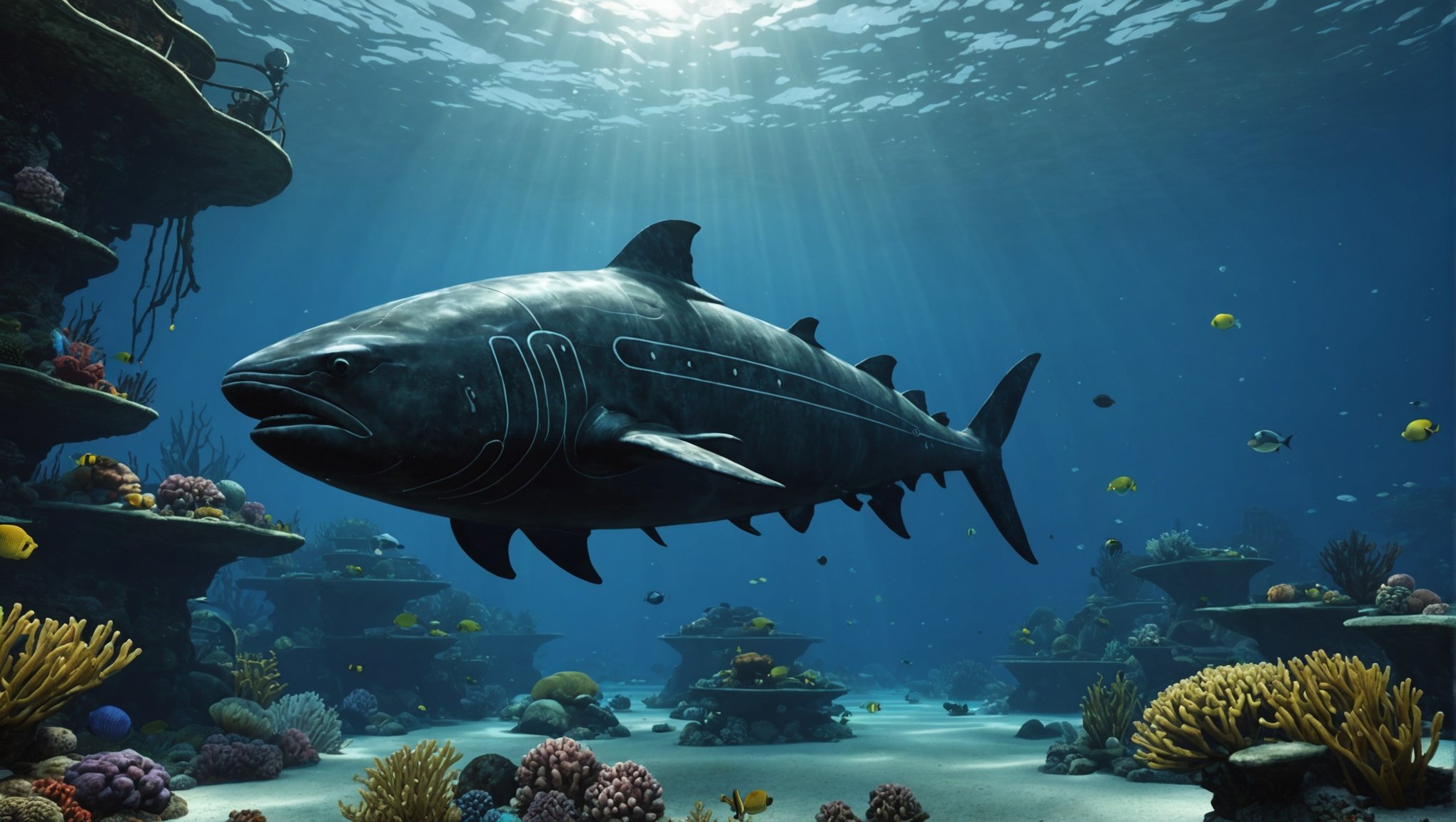In the enthralling realm of gaming, where the boundaries of reality are constantly being pushed, an intriguing facet that demands attention is the mesmerizing underwater world. The challenge lies in authentically representing the deep sea’s enchanting yet mysterious atmosphere. This article delves into the most effective techniques for creating realistic underwater lighting in ocean exploration games. We will examine the science behind these techniques, the system requirements, and the role of data in achieving an immersive gaming experience.
The Science Behind Underwater Lighting
As you delve into the depths of the ocean, the behavior of light changes dramatically. Sunlight, which reaches the surface of the water, is absorbed and scattered as it dives deeper, affecting visibility and color perception. Understanding the science behind these phenomena is crucial to creating a realistic underwater environment in gaming.
Also read : How can real-time physics simulations improve the realism of combat mechanics in action games?
From a gaming perspective, representing these changes in light behavior creates an authentic underwater atmosphere. Reflection, refraction, and scattering are the three fundamental light behaviors that you need to consider in your game development project.
Reflection is the bouncing back of light after it hits a surface. In the context of underwater lighting, consider the reflection of sunlight on the water’s surface. Refraction is the bending of light as it passes from one medium to another, such as air to water. Scattering is the spreading of light in different directions.
Also read : How can developers ensure realistic character interactions using natural language processing?
Implementing these behaviors in your game will create an authentic experience for players as they dive into the deep sea, witnessing the changes in light and color as they descend further from the surface.
Real-Time and Precomputed Light
When it comes to implementing lighting in your ocean exploration game, deciding between real-time and precomputed lighting systems is crucial.
Real-time lighting, as the name suggests, calculates light in real-time during gameplay. This method offers a high level of dynamism, with light responding promptly to changes in the game environment. However, it demands significant processing power, which may not be feasible for all gaming systems.
On the other hand, precomputed lighting pre-calculates the lighting data and stores it for use during the gameplay. This method is less resource-intensive but lacks the dynamism of real-time lighting.
Your choice between these two methods will depend on the specific requirements of your game and the resources at your disposal.
The Role of Data in Lighting
Data plays a pivotal role in achieving realistic underwater lighting in ocean exploration games. From the absorption properties of water to the reflectivity of various underwater surfaces, data can guide the lighting algorithms that will dictate your game’s visual experience.
Collecting this data can involve a mix of research and fieldwork. For example, you might need to conduct dives to gather first-hand observations of underwater lighting or consult scientific literature on marine light behavior.
Your game engine’s ability to process and implement this data determines how accurately your game can replicate underwater lighting conditions. Hence, an effective data management infrastructure is critical to the success of your game development project.
Light Sources and Shadows
Just as crucial as the behavior of light in water is the origin of the light itself. In an underwater environment, light can originate from various sources, including the sun, moon, artificial lights from a diver’s equipment, or bioluminescent marine life.
Incorporating these multiple light sources into your game will enhance its authenticity. However, this also introduces the challenge of managing shadows, which can be a complex task in a dynamic underwater environment.
When dealing with multiple light sources, you must consider how each source contributes to a subject’s overall illumination and the shadows it casts. Remember that shadows in the underwater environment are softer and less defined than those on land due to light scattering.
In summary, creating realistic underwater lighting in ocean exploration games is a fascinating yet challenging task. You will need to grapple with the science of light behavior in water, choose between real-time or precomputed lighting, manage data effectively, and handle multiple light sources and shadows. With the right approach and tools, you can create a compelling underwater experience that captivates your players and immerses them in the mysterious world beneath the ocean’s surface.
Light Attenuation and Color Filtering
In the endeavor to create realistic underwater lighting, understanding and implementing light attenuation and color filtering is essential. Light attenuation refers to the gradual loss of light as it travels through a medium. As light descends into water, its intensity diminishes, resulting in a darker, more mysterious environment that resonates with the depths of the ocean.
Simulating this phenomenon in your ocean exploration game can significantly enhance its realism. To do this, you need to program your game engine to gradually reduce the intensity of light as it travels deeper into the water. Remember, light attenuation in water isn’t linear; it follows an exponential curve. Therefore, the deeper your player descends, the more rapidly the light should diminish.
Meanwhile, color filtering is vital to depict how different wavelengths of light are absorbed at different rates in water. This absorption results in the distinct blue-green coloration typical of underwater environments. As depth increases, the red wavelengths get absorbed first, followed by greens and finally blues. Simulating this in your game will help recreate an authentic underwater visual experience.
The Impact of Weather and Time
The weather above the surface and the time of day also significantly impact underwater lighting conditions. These factors influence the amount and the angle of light that penetrates the surface of the water and subsequently influences the underwater world’s appearance.
During a sunny day, more light enters the water, resulting in clearer visibility and vibrant colors. However, if it’s a cloudy day or if the game is set during dawn or dusk, the underwater world will be much darker and murkier. To simulate these conditions, you need to adjust the intensity and angle of your primary light source (the sun) based on the weather and time of day in your game.
Moreover, the surface of the water itself can also affect underwater lighting. A calm, flat surface allows more light to penetrate than a rough, choppy surface, which scatters light in various directions.
In the pursuit of creating an immersive and realistic underwater world in ocean exploration games, understanding and implementing authentic underwater lighting is paramount. From grasping the science behind underwater lighting behaviors like reflection, refraction, and scattering to choosing between real-time and precomputed lighting, every aspect plays a significant role in achieving an accurate depiction of the underwater realm.
The integration of the principles of light attenuation and color filtering is crucial in simulating the deep-sea atmosphere, and so is considering the effects of weather and time of day on underwater visibility. Remember, the more accurate your simulation of these aspects, the more engaging and realistic your game will be.
In essence, creating realistic underwater lighting is both a science and an art, requiring a deep understanding of light behavior in water and the ability to translate that knowledge into code. By mastering these elements, you can truly transport your players into the captivating and mysterious world beneath the ocean’s surface.











